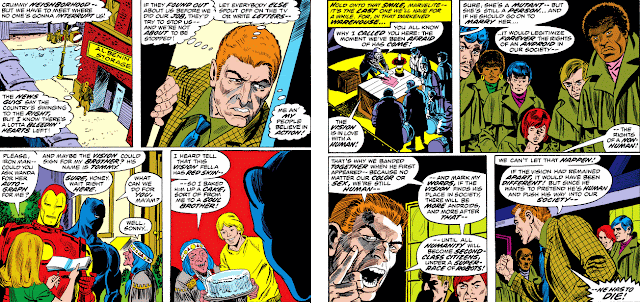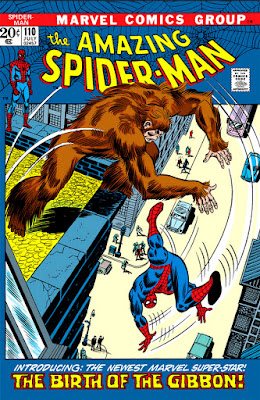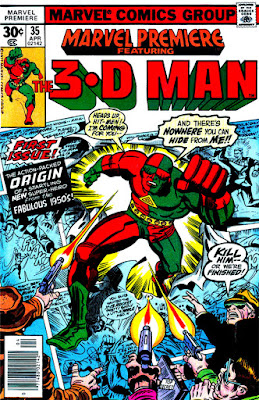Happy holidays, everyone!
But not everyone is feeling the holiday cheer. For instance, meet dismayed Daily Bugle reporter Lester (we're never told the poor man's last name), who on Christmas Eve finds himself sitting across the desk from his editor, Irving Griffen, and receiving some very jarring news under the circumstances. Nevertheless, he also receives a deadline--and to comply with Griffen's ultimatum magnanimous offer of continued employment, he ends up tapping a very special source who could be his best chance for meeting that deadline before the axe falls.
The year is 2007, just when Marvel's books are beginning to display signs of the company's Secret Invasion crossover event. From what we'll see of Lester's, er, canvassing, you would think the Skrulls would certainly make seizing this galaxy-spanning teleportation device (!!) which Reed has whipped up (under his own deadline from S.H.I.E.L.D.) a priority over their infiltration plans; but fortunately for Lester, he's left unhindered to research his story and report what meaning Christmas holds for other individuals, races, and, in some cases, species.
(Not to take this frolic by writer Mike Carey too seriously, but no, I don't know why Reed would object to his comment about reaching out to people during Christmas being on the record. Anyone care to hazard a guess?)
Finally, Lester has what he needs and (presumably) meets his deadline with Griffen. No doubt Lester's elation at pleasing his boss (and keeping his job) kept him from noticing the curious change in Griffen's desk name plate--evidence of a still-developing story that would have ramifications for future Christmases as well as any other traditions which the human race held dear.
we'll see you back here in 2021!






















































